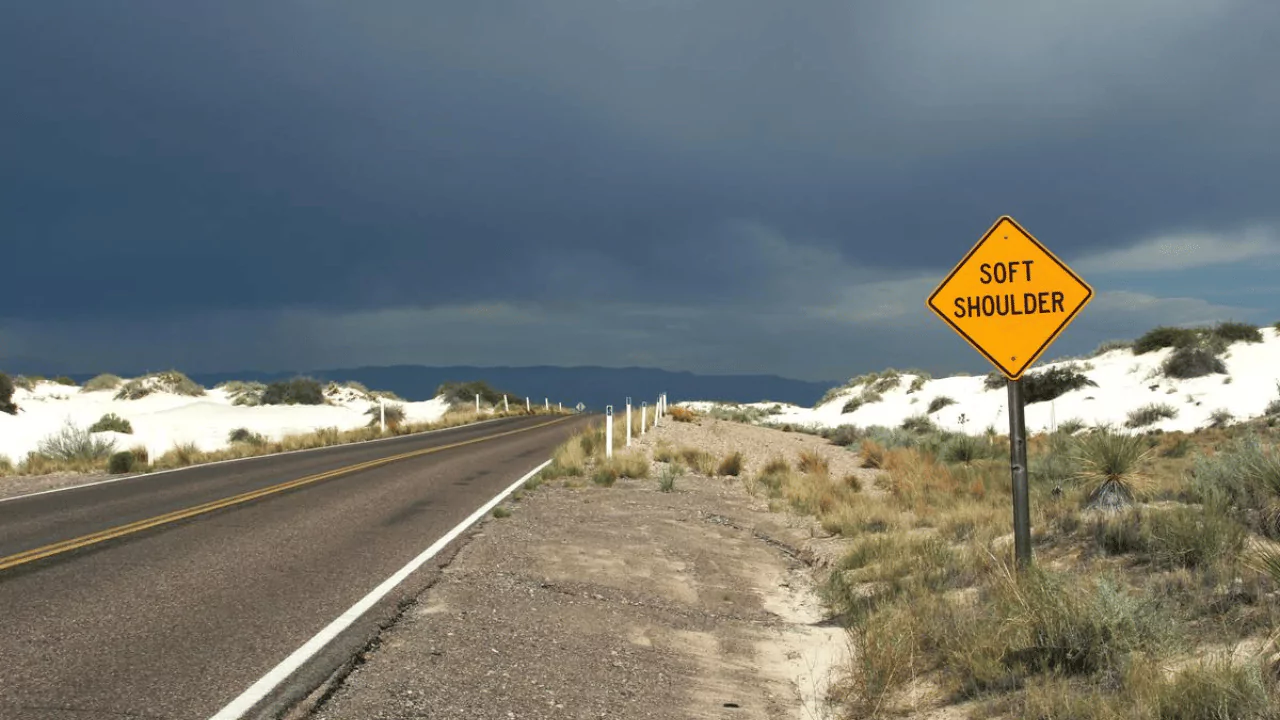A soft shoulder refers to the side of a road that is not paved or is paved but has degraded over time. Understanding what a soft shoulder is and knowing how to react when you encounter one as a driver is important for road safety.
What is a Soft Shoulder?
A soft shoulder is the unpaved or degraded paved shoulder of a road. It is the portion of the roadway edge that accommodates stopped vehicles for emergency use and provides lateral support to the adjacent roadway structure. Unlike a firm paved shoulder, a soft shoulder has a weak subgrade that cannot adequately support vehicles.
Definition and Explanation
The shoulder is the part of the road that borders the traveled way. It is paved or unpaved and provides space for stopped vehicles, emergency use, and lateral support of the roadway structure. A soft shoulder specifically has a weak, uncompacted subgrade that is unable to support vehicles that pull onto it. The surface may have cracks, ruts, bumps, drop-offs, or vegetation overgrowth. This makes the soft shoulder unsafe for driving on.
Importance of Understanding Soft Shoulder Signs
It is critical that drivers understand soft shoulder warning signs. These signs alert drivers that a section of the road has shoulders that cannot safely support vehicles. Drivers need to be aware that pulling onto the shoulder is dangerous and should be avoided except for true emergencies. Obeying soft shoulder signs can prevent accidents and car damage.
Causes and Dangers of Soft Shoulders
There are a few common causes of soft road shoulders which lead to hazardous conditions for motorists. It is important to understand these causes and the inherent dangers of soft shoulders.
1. Soil Erosion and Poor Drainage
Water drainage issues are a primary cause of soft shoulders. Poorly draining soils or compromised drainage systems along the roadway allow water accumulation on the shoulder. This leads to erosion and washing away of the supporting subgrade over time. Excessive moisture causes the shoulder to lose stability.
2. Increased Risk of Accidents and Vehicle Damage
When an unsuspecting driver pulls onto a soft shoulder, the weak subsurface can cause the shoulder to collapse under the vehicle’s weight. This leads to a loss of control and accidents. Vehicles can sink, tilt and even overturn when the soft shoulder gives way. The raised edge of the pavement can also damage tires and wheels.
3. Difficulty in Maneuvering
Trying to steer or get back onto the roadway from a distorted soft shoulder can be very difficult. The lack of support leads to rutting tire tracks, bumps, and dips that can grip wheels and make maneuvering challenging. Attempting to accelerate out of a soft shoulder is dangerous.
Safety Tips for Driving on Soft Shoulders
Use caution when driving along roadways with soft shoulders. Here are some tips to follow:
1. Stay Alert and Aware
Be vigilant in watching for the orange “Soft Shoulder” signs and the edges of the road. Slow down and leave extra distance between your vehicle and the shoulder. Looking ahead allows you to react safely if needed.
2. Avoid Sudden Maneuvers
Make gradual maneuvers if you have to pull off the roadway. The soft shoulder cannot withstand abrupt stops or quick turns. Signal well in advance, reduce speed gradually, and pull over very carefully.
3. Slow Down and Maintain Control
If your wheels drop off the pavement onto the shoulder, do not slam on the brakes or jerk the wheel. Stay calm, hold the wheel firmly, and slowly reduce speed. Pull back onto the pavement when it is safe to do so.
4. Report Soft Shoulder Signs to Authorities
Alerting transportation authorities about damaged soft shoulder signs or hazardous areas helps improve roadway safety. Proper repairs to drainage, eroded edges and unstable shoulders can then be made.
In summary, a soft shoulder is a weak, unsafe portion of the road edge that cannot support vehicles. Understanding and spotting deterioration signs, driving attentively, and reporting problems are all ways to improve soft shoulder safety. Remaining alert and following warnings allows smart driving along roadways with hazardous shoulders. Safely navigating soft shoulders relies on every driver’s caution, attention, and responsibility behind the wheel.



